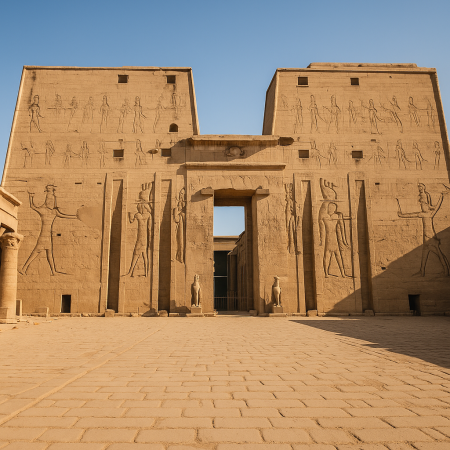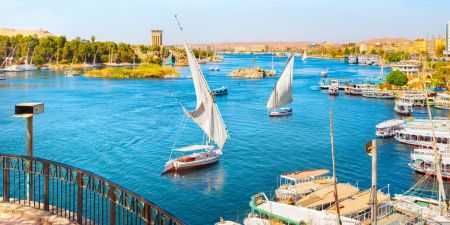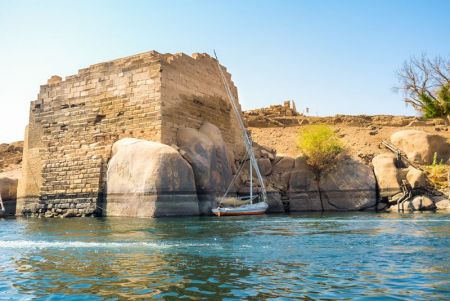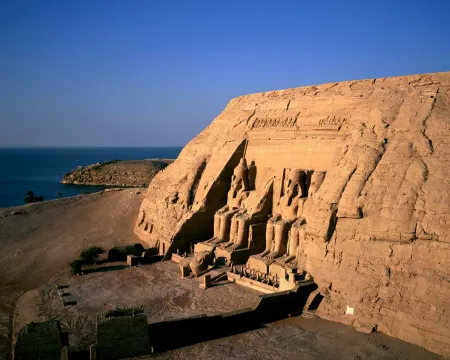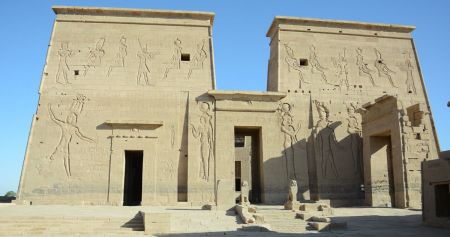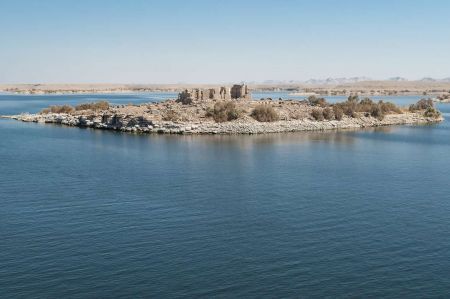The Nubian Village : A Journey into Egypt’s Living Heritage
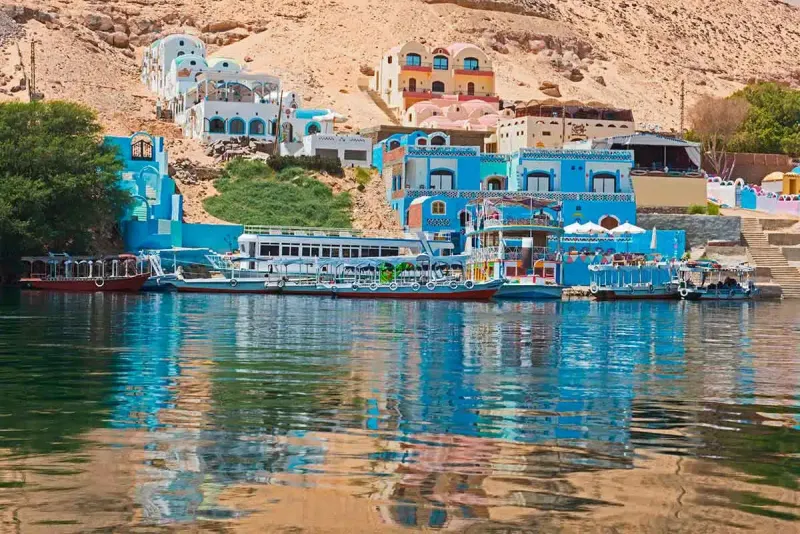
Introduction to the Nubian Village Experience in Aswan
Nestled along the west bank of the Nile near Aswan, the Nubian Village is one of Egypt’s most vibrant cultural gems. Far from the grandeur of temples and tombs, this lively settlement offers a refreshing contrast to Egypt’s ancient ruins. With its sun-drenched, painted houses, warm hospitality, and centuries-old traditions, the Nubian Village immerses visitors in the daily life of a resilient and joyful community.
Nubians are the descendants of one of Africa’s oldest civilizations, with roots dating back to the Kingdom of Kush. Today, they preserve their identity through language, architecture, music, and crafts. Walking through a Nubian Village is like stepping into a living museum of color and culture—homes splashed in turquoise, orange, pink, and blue, streets buzzing with drumbeats and laughter, and courtyards filled with spices, handmade jewelry, and baskets.
A visit to the Nubian Village isn't just a sightseeing excursion; it’s a cultural exchange that bridges past and present. Whether sipping hibiscus tea with a local family, riding a camel along the Nile, or shopping for authentic Nubian handicrafts, guests walk away with a deeper appreciation for this remarkable corner of Egypt.
History and Origins of the Nubian People
Ancient Nubia and the Kingdom of Kush
Nubia, stretching from southern Egypt into northern Sudan, was once the cradle of powerful kingdoms such as Ta-Seti, Kerma, and Kush. These civilizations rivaled ancient Egypt in wealth, art, and military strength. The Kingdom of Kush even ruled Egypt as its 25th Dynasty, known as the Black Pharaohs. Nubians were skilled archers, traders, and builders whose influence spread across the Nile Valley.
Over time, political shifts and the construction of the Aswan High Dam in the 1960s displaced many Nubians from their ancestral lands. Much of Old Nubia now lies beneath Lake Nasser, yet the Nubian people have preserved their culture in resettled villages around Aswan.
Resilience Through Displacement
The building of the High Dam forced thousands of Nubians to relocate, losing not only homes but also historical landmarks and fertile farmland. Despite this hardship, Nubians rebuilt their lives with determination and pride. Today’s Nubian Villages are a testament to their enduring spirit and commitment to keeping their identity alive.
What to Expect in the Nubian Village
Traditional Nubian Architecture
The first thing that strikes visitors is the architecture. Nubian homes are built from mud brick, with domed roofs that regulate temperature in the desert heat. Walls are painted in bold colors and decorated with symbols like crocodiles, camels, and palm trees. Some homes include small sand-filled courtyards with shaded seating areas, creating a peaceful oasis in the heart of the village.
Painted Houses and Murals
Each house in the Nubian Village is a work of art. Murals feature bright motifs—peacocks, boats, suns, and geometric patterns—telling visual stories of family heritage and Nubian folklore. These houses are not merely decorative; they reflect pride, storytelling, and hospitality.
Warm Nubian Hospitality
Nubians are known across Egypt for their friendliness and generosity. Many families open their homes to visitors, offering tea, henna tattoos, and home-cooked meals. It’s common to be invited in for a tour of the house, with explanations of decorations, daily routines, and Nubian traditions. The warmth of these encounters is often the highlight of the trip.
Local Crafts and Souvenirs
Markets in the village are filled with unique souvenirs:
-
Handwoven baskets
-
Beaded jewelry
-
Spices like hibiscus and fenugreek
-
Perfume oils
-
Nubian dolls and painted ceramics
Unlike tourist-heavy bazaars, items here are often handmade and sold directly by the artisans. Shopping becomes a cultural experience, not just a transaction.
Nubian Food and Cuisine
Flavors of the South
Nubian cuisine blends Egyptian staples with African and Sudanese influences. Signature dishes include:
-
Fatta: A hearty mix of bread, rice, garlic, and meat
-
Tagine stews: Cooked in clay pots with okra, lentils, or beans
-
Grilled fish and chicken: Often seasoned with Nubian spices
-
Karkadeh (hibiscus tea): A refreshing, crimson-colored drink served cold or hot
Meals are often shared communally, with flatbread used to scoop up flavorful sauces. The culinary experience is earthy, soulful, and deeply satisfying.
Activities and Things to Do in the Nubian Village
Nile Felucca Ride to the Village
Most visitors arrive by traditional sailboat (felucca) or motorboat from Aswan. The scenic ride offers views of Elephantine Island, desert cliffs, and palm-lined shores. Approaching the colorful village from the Nile is like entering a hidden world.
Camel Rides and Village Tours
Once ashore, you can explore the village on foot or by camelback. Guides—often locals—share stories of Nubian life, local legends, and ancestral customs. Some tours include school visits, giving insight into the education system and efforts to preserve the Nubian language.
Meet a Crocodile (If You Dare!)
A quirky tradition in some Nubian homes is raising a live crocodile in a tank—believed to bring protection and luck. While not universally practiced, it fascinates visitors and sparks conversation about ancient beliefs.
Cultural Preservation and Challenges
Language and Identity
The Nubian language—either Nobiin or Kenzi—is orally passed down and not widely written. Many young Nubians are working to preserve their dialects through schools, apps, and cultural events. With globalization and modern media, maintaining language fluency remains a challenge, but one the community takes seriously.
Sustainable Tourism and Community Empowerment
Tourism supports the village economy, but responsible practices are essential. Locally run tours, eco-friendly transportation, and cultural sensitivity are key to sustaining both environment and heritage. Many initiatives now focus on empowering women through craft cooperatives and education programs.
Best Time to Visit the Nubian Village
Ideal Seasons
The best time to visit is between October and April, when temperatures are cooler and the Nile breeze is pleasant. Summer months (June–August) can be extremely hot, limiting outdoor activities.
How to Get There
-
By motorboat or felucca from Aswan’s Corniche
-
Organized tours from Aswan hotels or cruise ships
-
Custom private visits arranged through local operators
Why the Nubian Village Is a Must-Visit in Egypt
It’s not just the vibrant houses or spicy stews—it’s the people, their stories, and their will to protect their culture that makes the Nubian Village unforgettable. Visitors don’t just see something old; they connect with something living, personal, and resilient. In a land famed for its past, this village proudly celebrates its present.
FAQs About the Nubian Village
Where is the Nubian Village located?
The Nubian Village is on the west bank of the Nile near Aswan, southern Egypt.
What can I do in the Nubian Village?
Activities include touring painted homes, shopping for crafts, trying local food, camel rides, and cultural conversations with locals.
How do I get to the Nubian Village?
You can reach it by felucca or motorboat from Aswan, usually in under 30 minutes.
Is it safe to visit the Nubian Village?
Yes, it's very safe. Locals are welcoming, and many rely on tourism for income.
Do people in the Nubian Village speak English?
Some locals, especially younger ones and those working in tourism, speak English well. Communication is friendly and usually easy.
Can I stay overnight in the Nubian Village?
Yes. Some families offer guesthouse stays with meals, giving visitors a chance to live like a local.
Final Words: A Cultural Encounter You’ll Never Forget
The Nubian Village is a rare opportunity to witness a living culture that’s both ancient and modern. Between the bright murals, warm smiles, and deep heritage, visitors leave with more than just photos—they carry memories of genuine human connection. For travelers seeking authenticity, history, and heart, this is one Egyptian experience that can't be missed.



